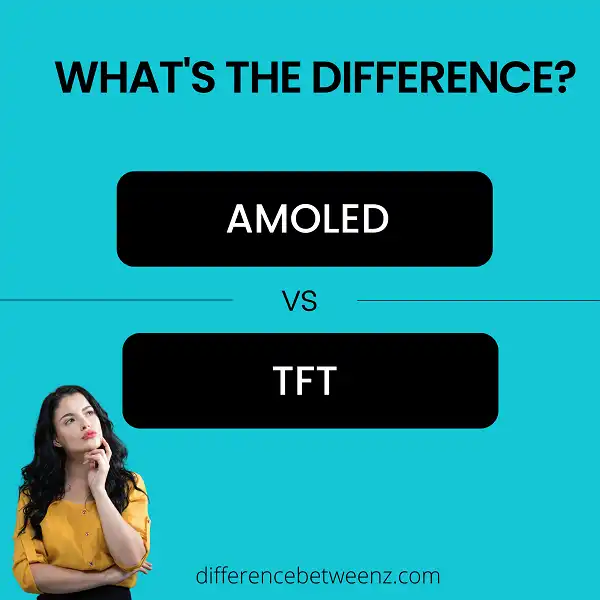AMOLED and TFT displays both have their own advantages and disadvantages, but how do you know which one is the best for you? In this blog post, we’ll take a look at the differences between these two display technologies so you can make an informed decision. Stay tuned!
What is AMOLED?
AMOLED is a display technology used in electronic devices such as smartphones and tablets. AMOLED stands for Active Matrix Organic Light Emitting Diode. The “active matrix” refers to the fact that each pixel in an AMOLED display is individually controlled by a transistor. This is in contrast to older display technologies, such as LCDs, which use a passive matrix that requires each row and column of pixels to be addressed sequentially.
The “organic” in AMOLED refers to the fact that the material used to create the light-emitting diodes is carbon-based. AMOLED displays are thinner, lighter, and more energy-efficient than LCDs, and they can be made flexible and transparent. However, AMOLED displays are also more expensive to manufacture.
What is TFT?
TFT is a type of liquid crystal display (LCD) that is used in electronic devices such as computers, laptops, and mobile phones. TFTs are made up of a thin film of semiconductor material sandwiched between two layers of glass. When an electric current is applied to the TFT, it changes the alignment of the liquid crystals, which in turn affects the amount of light that passes through the TFT. TFTs are used in LCDs because they provide better image quality than other types of LCDs. TFTs are also more power efficient than other types of LCDs, which makes them ideal for use in mobile devices.
Difference between AMOLED and TFT
AMOLED and TFT are two very different technologies used in LCD screens. AMOLED is an active matrix organic light emitting diode display. TFT is a thin film transistor display. AMOLED screens are made up of organic materials that emit light when an electric current is passed through them. This means that each pixel can be turned on and off individually, which results in a higher contrast ratio. AMOLED displays also have a faster response time, meaning they can refresh the screen more quickly.
However, AMOLED screens can suffer from image retention and screen burn-in if left static for too long. TFT displays use inorganic materials, meaning they do not emit light themselves. Instead, they rely on a backlight to illuminate the screen. This means that TFT displays have a lower contrast ratio than AMOLEDs. However, they do not suffer from image retention or screen burn-in. TFT displays also have a wider viewing angle than AMOLEDs.
Conclusion
So, what is the difference between AMOLED and TFT? The answer to that question depends on who you ask. Some people might say that AMOLED screens are more vibrant because of their use of organic light-emitting diodes. Others might claim that TFT screens are sharper and have better viewing angles. Ultimately, it’s up to the individual consumer to decide which technology they prefer.


